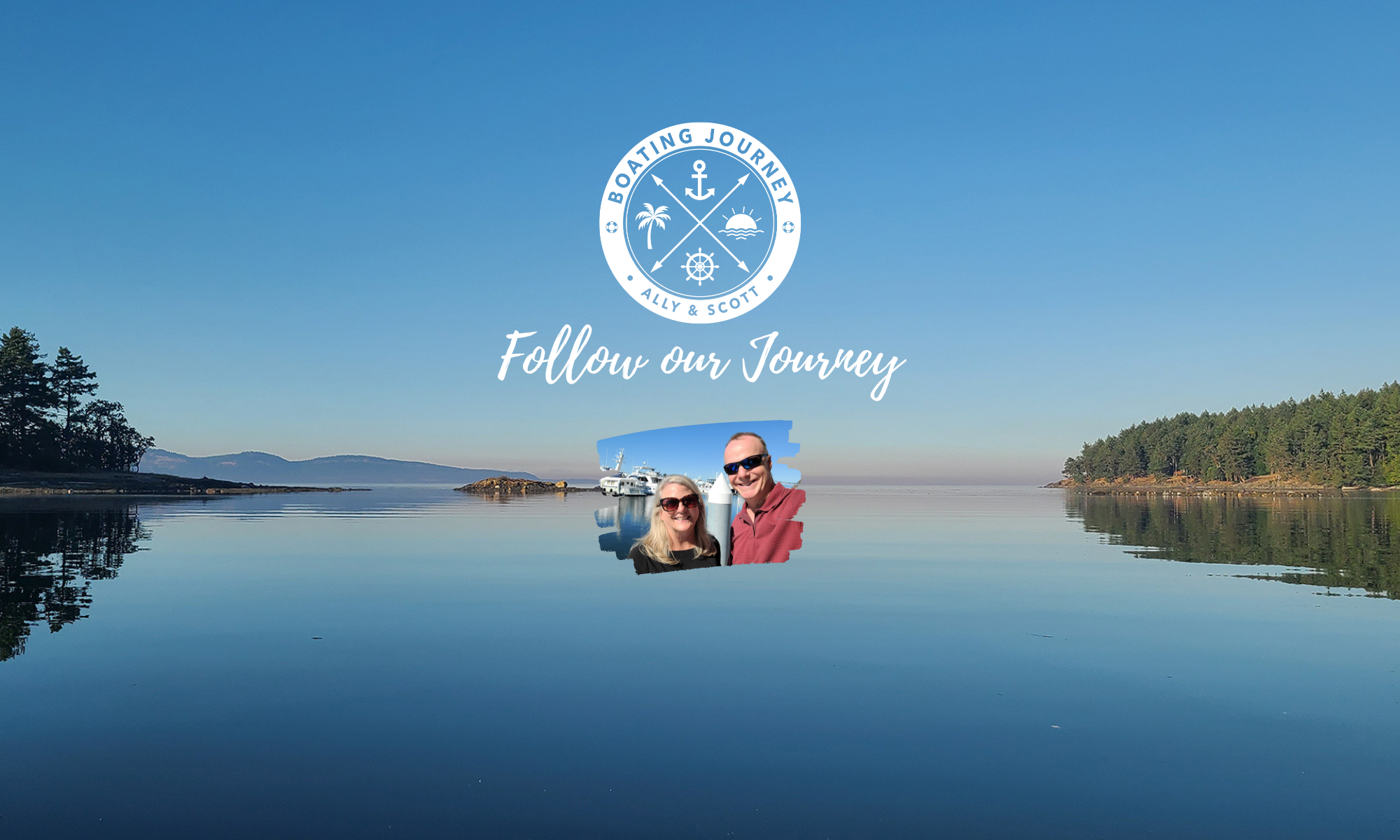While Scott and I might not be out at sea, I still want to make sure the fresh water on the boat is good and drinkable. Let’s just say, I’m a bit of a water snob and I have always been that way. Perhaps it’s because the tap water I grew up with tasted horrible. At home, I always drink filtered water – whether it be through a pitcher or a portable (Brita) water bottle. Our goal is to help eliminate plastic bottles and find other solutions. That’s where this blog post comes into play! We’re all guilty of buying bottled water because it’s cheap and readily available.

Let’s go back a couple of years, when we owned our first boat. I shared a post about potable water and how I wondered if the water on that boat was safe to drink. Keep in mind, that boat sat on the hard for two years, so the tank had to have gotten nasty. I refused to brush my teeth with the water on that boat. Yes, there were things we could have done to clean up the tank, but we didn’t. But I did say, that the next boat would have to have some type of filtration system on it.
Water at the Dock
At Elliott Bay Marina, we have city water, which is actually pretty good. Some marinas you visit, especially up north might not have the greatest quality and they don’t recommend you add it to your tanks. However, if you have no choice, then make sure you take the steps necessary to purify the water you are putting in your tanks.
The first thing I always recommend, is use an Teknor Zero-G Rv/Marine Hose for safe drinking water when you fill up your tank. We only use this hose for drinking water and a different hose to wash the boat.

This year, we took it a step farther and we use a Camco TastePURE Water Filter which filters the water from the faucet to the hose. This filter runs about $26 and we keep it in the locker with the antibacterial hose.


Drinking Water
Just because the water in our fresh water tank has been filtered, it doesn’t mean it’s good enough to drink (for me at least). That’s because you don’t know how well your tanks has been maintained. Typically, the smell of the water is a good indicator and on this boat, the water smells fine. So I have no issue brushing my teeth with this water, but will I drink it? Not so fast! Luckily for us, we also have a drinking water faucet! How cool is that? To be honest, I didn’t know what it was for the first few months!

Under the sink, there’s another filter that is hooked up to this faucet, acting like a super Brita filter. However, make sure before you buy a replacement filter, that it’s the right part. These are not cheap. This 3M filter was about $80 from a specialty filter company. I was skeptical, but the water tastes great!
Making Water On-Board
Scott and I were shocked to learn this boat came with a water maker! Our broker had told us to make sure we run it regularly to keep the membranes wet. Since it had been on the market for at least 6 months, I wondered if it needed to be serviced. We have run it on low pressure a few times and then I was convinced that the water tasted like salt. LOL!! Time to have it checked out.
I called Emerald Harbor Marine located right here at Elliott Bay Marina. Turns out they know this boat and unit well. The previous owner had upgraded the water maker and turned it into a “science project”. Not sure that that means, but I was happy to hear it was regularly maintained.
Dan came down and ran the machine to pressure and let the onboard TDS meter stabilize at 148 PPM. A TDS meter is a device used to indicate the Total Dissolved Solids in a solution. Since dissolved ionized solids, such as salts and minerals, increase the conductivity of a solution, a TDS meter measures the conductivity of the solution and estimates the TDS from that reading. He then disconnected it and sampled the water with his hand held unit and it showed 135PPM. Anything below 500 PPM is good. In Puget Sound, our water maker should make water from 100-350PPM.

Water Maker Maintenance
Moving forward, we need to make sure we flush the system with fresh water each week. I asked how we will know to change the filters? He said that there is a vacuum pressure gauge and when the system is running and the filters are clean, the gauge should read 20-30 PSI. As the filters clog, the pressure will drop. He recommends replacing the filters when the feed reaches 5-10 PSI. Dan also mentioned that the membranes should have a 6-8 year life with proper care. If we are not going to be on the boat during the winter, he recommends that we have them “pickle the system”, basically preserving the system and locking it down until Spring.
So now you know more about water makers than you ever wanted. You might be asking why we are doing all of this? Do we use the water maker? Not really, but water makers are great to have when you are out cruising. Scott and I are maintaining the unit, so that it stays in tip top shape. Water makers are very expensive and our model is about $4000 new.
To summarize, we’ll keep the water maker membranes wet and use the drinking faucet for all consumable water and to make ice! As always, thanks for following our blog! Please be sure to subscribe to our Facebook, Instagram, Twitter and YouTube channels. Check out our full review on our YouTube channel below.
Cheers, Scott & Ally
#BoatingJourney





